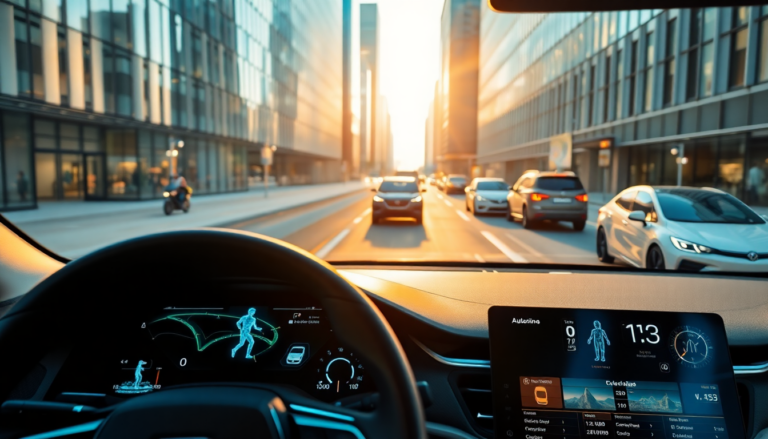Argomenti trattati
The automotive industry is in the midst of an exciting transformation, fueled by cutting-edge technologies that not only enhance safety but also elevate the driving experience. As vehicles evolve into complex digital platforms, the need for high-performance graphics processing units (GPUs) and Edge AI solutions is becoming increasingly critical. In this article, we’ll explore the latest advancements in automotive GPU technology and how they’re shaping infotainment systems, autonomous driving, and overall vehicle performance.
Market Overview and Key Innovations
Have you noticed how our cars are becoming more digital? The automotive sector is undergoing a significant shift towards digitization and automation, heavily relying on GPU technology to keep pace with these changes. With nearly two decades of experience under their belts, leading suppliers have developed GPU solutions that align with strict safety standards, like ISO 26262. This isn’t just about enhancing infotainment systems; it’s about providing the computational muscle needed for advanced driver assistance systems (ADAS).
As automotive designs grow more intricate, the demand for reliable and secure GPU solutions rises. Key players in the industry are focusing on scalability and performance, ensuring their products can adapt to the ever-evolving needs of automotive manufacturers. This adaptability is vital in a landscape where consumer expectations are soaring, especially regarding digital experiences behind the wheel. Who wouldn’t want a seamless integration of technology in their driving experience?
Key Applications of GPU Technology
One of the standout applications of GPU technology in automotive design is in infotainment systems. Modern vehicles come with multiple screens that serve not only for navigation and entertainment but also relay crucial driving information. The need for high-quality rendering and data security in these systems is paramount. Automotive GPUs are tasked with delivering exceptional performance while safeguarding critical information like speed and navigation details. Isn’t it fascinating how technology is shaping our interaction with our cars?
Moreover, GPUs are revolutionizing driver safety through their role in ADAS. Features such as lane assist, driver monitoring, and adaptive cruise control rely heavily on the processing power of these units. By enabling real-time data processing and decision-making, GPUs are not just enhancing vehicle safety; they’re improving our overall driving experience. Imagine the peace of mind knowing your car is actively helping you stay safe on the road!
Future Trends and Investment Opportunities
So, what does the future hold for automotive GPU technology? It looks bright, with continuous innovations driving performance and efficiency to new heights. As the demand for electric and autonomous vehicles accelerates, the need for advanced computational solutions will only grow. For investors and stakeholders in the automotive sector, recognizing the potential of GPU technology is essential for the success of upcoming vehicle models.
Additionally, the emergence of edge AI applications in vehicles opens up significant investment opportunities. This technology enables smarter, more responsive systems that can learn and adapt to driving conditions and user preferences. Investing in companies leading the charge in GPU development and edge AI solutions could prove to be a wise move, potentially yielding substantial returns in the years ahead. Who wouldn’t want to be part of this exciting journey?
Conclusion: The Road Ahead
In conclusion, the automotive industry stands on the brink of a technological revolution, with GPUs and Edge AI solutions at the forefront. These innovations not only enhance vehicle safety and performance but also redefine the driving experience for consumers. As manufacturers ramp up their investments in these technologies, the potential for growth in the sector is immense. Stakeholders should keep a close eye on emerging trends and opportunities, ensuring their strategies are aligned with the future of mobility. Ready to embrace the changes ahead?

